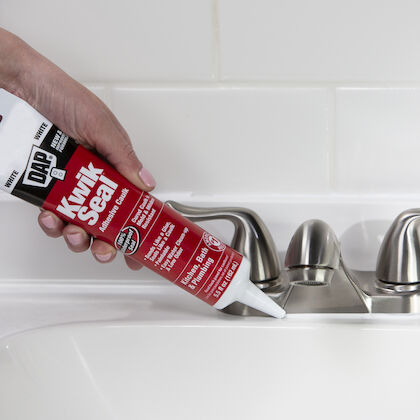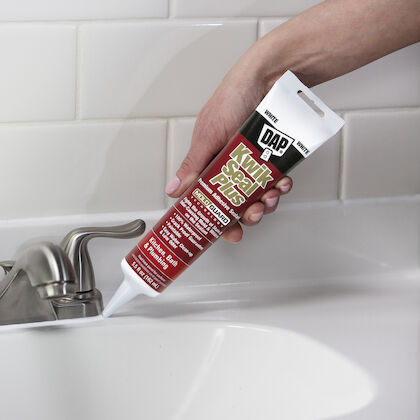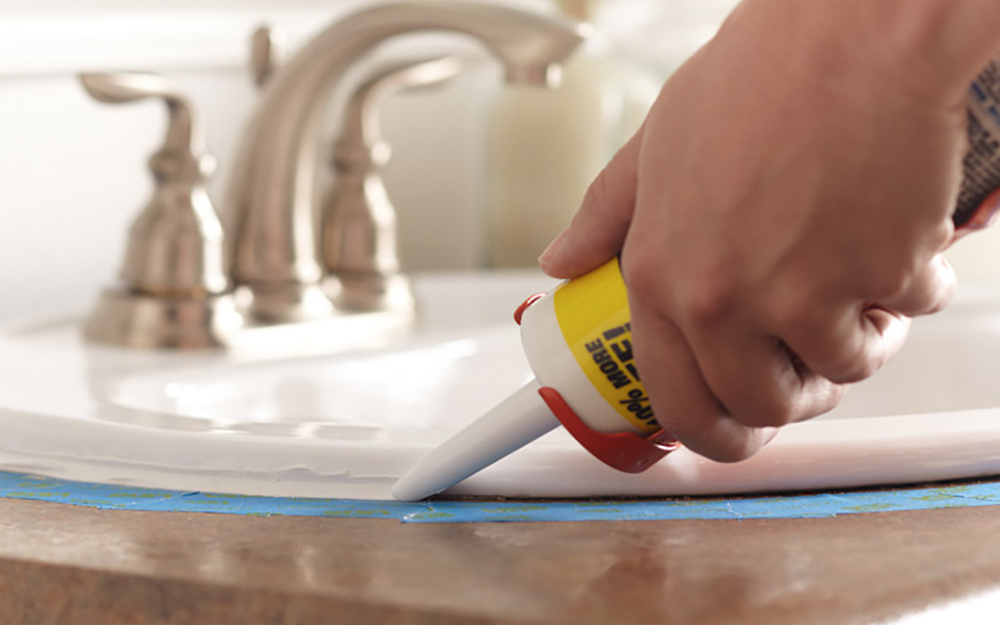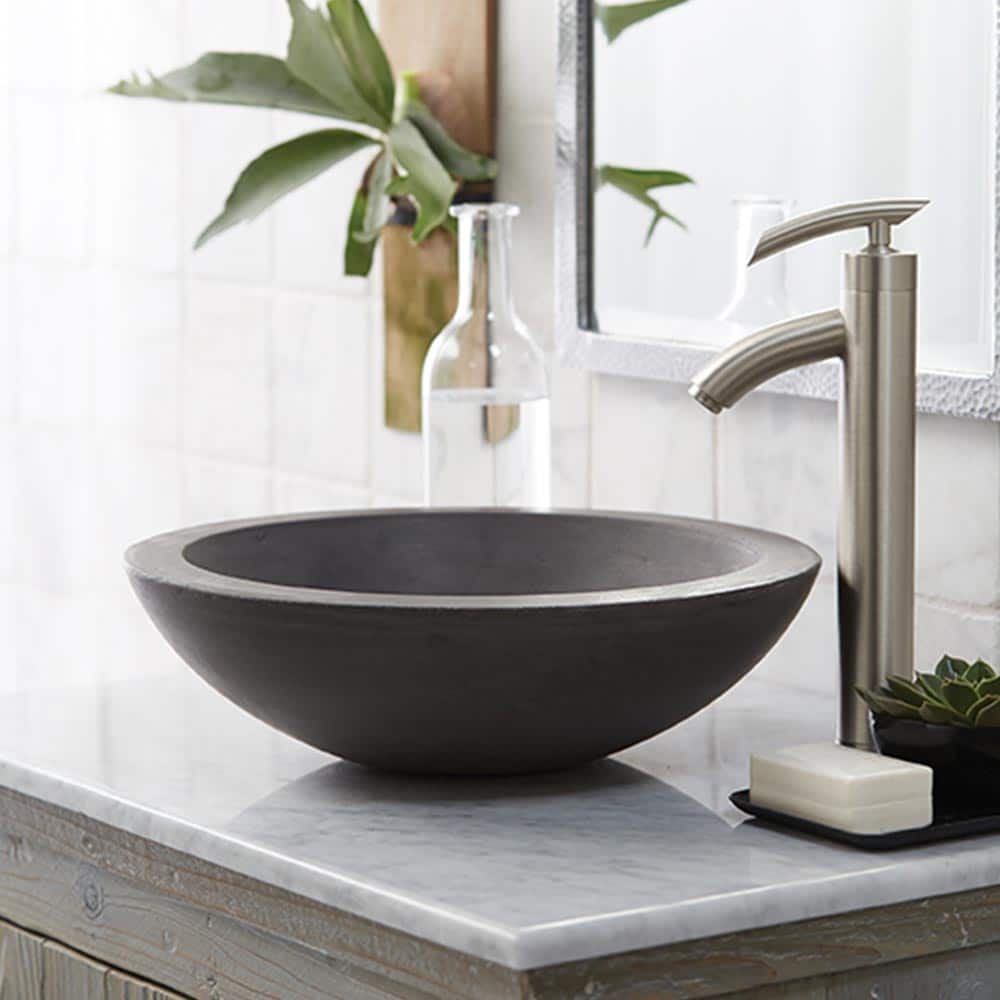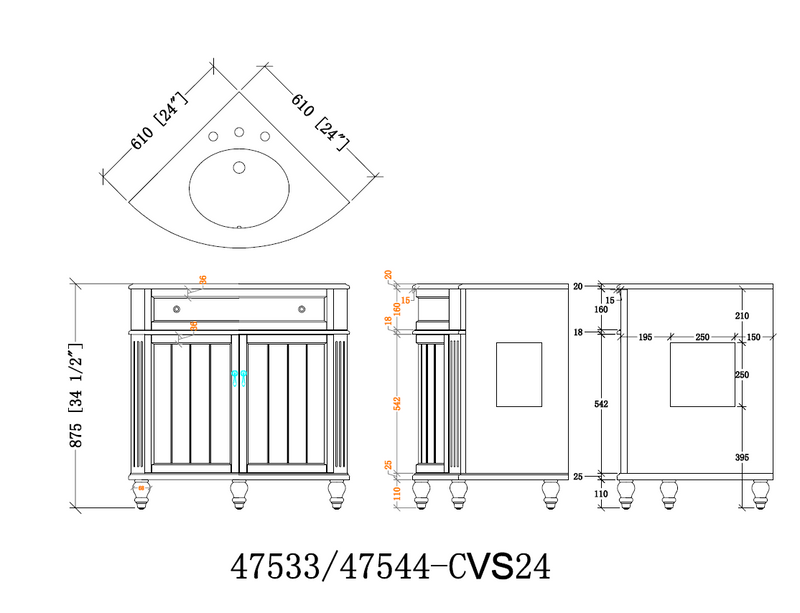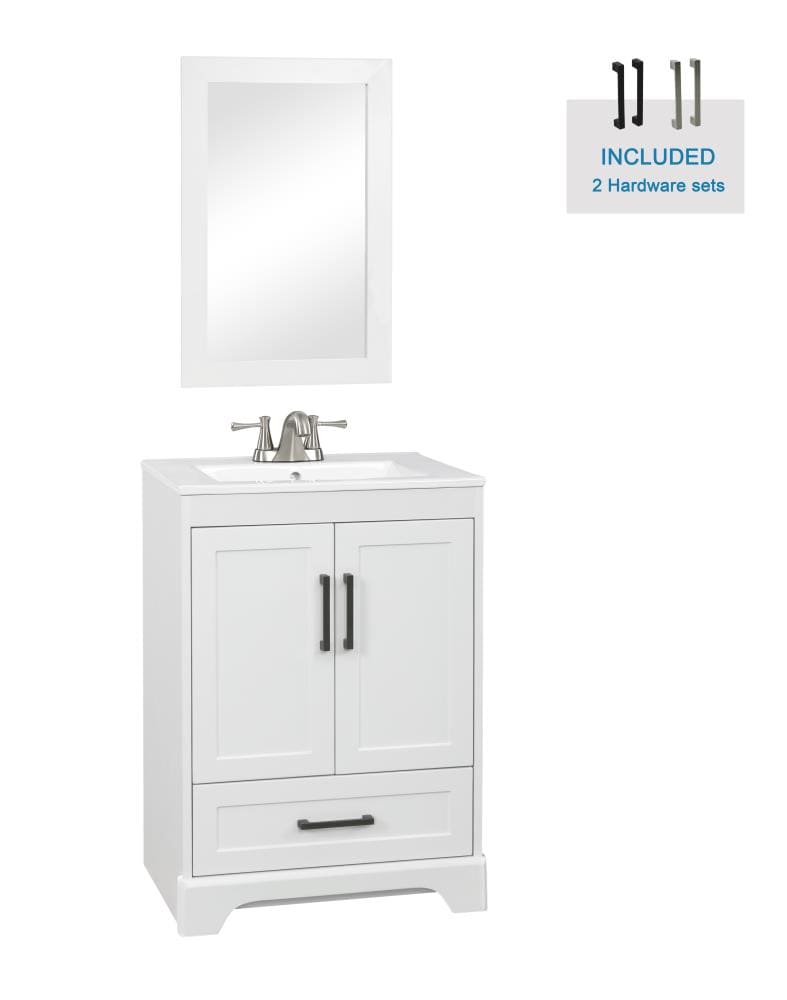Understanding the Importance of Choosing the Best Caulk for Your Bathroom Sink
Choosing the right caulk for your bathroom sink is essential for maintaining its longevity and preventing water damage. A good caulk will create a watertight seal, preventing leaks and mold growth. Understanding the importance of selecting the best caulk for your bathroom sink will help you make an informed decision and ensure a durable and beautiful sink installation.
- Preventing Water Damage: Water damage is a common problem in bathrooms, and the sink area is particularly vulnerable. By selecting the best caulk, you can create a barrier that prevents water from seeping into cracks or gaps around the sink. This will protect the surrounding walls, floors, and cabinets from water damage, ultimately saving you from costly repairs.
- Maintaining Hygiene: The bathroom is a space prone to moisture, which can lead to the growth of mold and mildew. The right caulk will not only provide a watertight seal but also have antimicrobial properties that inhibit the growth of mold and mildew. This will help maintain a clean and hygienic bathroom environment.
- Enhancing Aesthetics: Caulk plays a crucial role in enhancing the overall appearance of your bathroom sink. By choosing a caulk that matches the color of your sink or tiles, you can achieve a seamless look. Additionally, some caulk options offer a variety of finishes, such as matte or glossy, allowing you to customize the appearance of your sink area.
- Extending Lifespan: Investing in the best caulk for your bathroom sink will extend its lifespan. High-quality caulk is designed to withstand moisture, temperature changes, and frequent cleaning, ensuring a durable and long-lasting seal. By using the right caulk, you can avoid premature wear and tear, saving you money in the long run.
- Ease of Maintenance: Selecting the right caulk for your bathroom sink not only ensures a long-lasting seal but also makes maintenance easier. Good caulk is resistant to stains, cracking, and discoloration, making it easier to clean and maintain the sink area. This allows you to spend less time on upkeep and more time enjoying your bathroom.

Top Factors to Consider When Selecting Caulk for Bathroom Sinks
Selecting the right caulk for your bathroom sink is essential to ensure a long-lasting and effective seal. With numerous options available in the market, it’s important to consider certain factors that will help you make an informed decision. By understanding the top factors to consider when selecting caulk for bathroom sinks, you can choose the best product for your specific needs.
Waterproof Properties: One of the most crucial factors to consider when choosing caulk for bathroom sinks is its waterproof properties. Look for a caulk that is specifically designed for wet environments and offers excellent water resistance. This will prevent any water leaks or damage around the sink area, ensuring the longevity of your sink installation.
Flexibility and Durability: Bathroom sinks are subjected to constant use and temperature changes, so it’s important to choose a caulk that is flexible and durable. Flexible caulk can accommodate the natural movement of the sink without cracking or breaking the seal. Additionally, opt for a caulk that has good adhesion to different surfaces, ensuring a long-lasting bond.
Mold and Mildew Resistance: Bathrooms are prone to mold and mildew growth due to the high moisture levels. To prevent the growth of these unsightly and unhealthy substances, choose caulk that has mold and mildew resistance properties. This will help maintain a clean and hygienic environment in your bathroom.
Ease of Application: Consider the ease of application when selecting caulk for your bathroom sink. Some caulk options come with applicators or nozzles that make the process more convenient and mess-free. Additionally, look for a caulk that is easy to clean up and has a reasonable curing time.
Aesthetic Appeal: While functionality is important, the aesthetic appeal of the caulk should not be overlooked. Choose a caulk color that matches or complements your sink and bathroom décor. Some brands offer a wide range of colors, allowing you to achieve a seamless and visually pleasing finish.
Brand Reputation and Reviews: Last, consider the reputation of the caulk brand and read customer reviews before making a final decision. Look for brands that are known for their quality and reliability. Customer reviews can provide valuable insights into the performance and durability of the caulk, helping you make an informed choice.
The Best Caulk Options for Long-Lasting Seal and Water Resistance in the Bathroom
Choosing the best caulk for your bathroom sink is crucial to ensure a long-lasting seal and water resistance. With a variety of caulk options available, it’s important to consider the ones that offer exceptional performance in wet environments. By exploring the best caulk options for a long-lasting seal and water resistance in the bathroom, you can make an informed decision and protect your sink area from water damage.
Silicone Caulk: Silicone caulk is widely regarded as one of the best options for bathroom sinks due to its excellent water resistance and durability. It forms a strong, flexible, and watertight seal that can withstand constant exposure to moisture. Silicone caulk also has good adhesion to various surfaces and is resistant to mold and mildew growth, making it an ideal choice for bathroom environments.
Polyurethane Caulk: Polyurethane caulk is another excellent option for bathroom sinks, known for its superior water resistance and durability. It can withstand extreme temperatures, making it ideal for areas where the sink is exposed to hot water. Polyurethane caulk has excellent adhesion and flexibility, ensuring a long-lasting and watertight seal.
Hybrid Polymer Caulk: Hybrid polymer caulk combines the best qualities of silicone and polyurethane caulk. It offers excellent water resistance, flexibility, and adhesion. Hybrid polymer caulk is easy to apply and clean up, making it a popular choice for bathroom sink installations. It also provides a strong bond and can withstand constant exposure to moisture in the bathroom.
Acrylic Latex Caulk: Acrylic latex caulk is a budget-friendly option that provides good water resistance and durability for bathroom sinks. While not as resistant to moisture as silicone or polyurethane caulk, it still offers a decent level of performance. Acrylic latex caulk is easy to apply, dries quickly, and can be painted over, allowing you to achieve a seamless finish.
100% Silicone Caulk: For maximum water resistance and durability, 100% silicone caulk is the go-to option. It forms an impenetrable seal that is resistant to water, mold, and mildew. 100% silicone caulk is ideal for areas with high moisture levels, such as bathroom sinks. It provides excellent adhesion and flexibility, ensuring a long-lasting and watertight seal.
Expert Tips for Applying Caulk to Your Bathroom Sink for a Professional Finish
Applying caulk to your bathroom sink is an important step in ensuring a professional and long-lasting finish. Proper application techniques can help create a watertight seal, prevent leaks, and enhance the overall appearance of your sink area. By following expert tips for applying caulk to your bathroom sink, you can achieve a professional finish and maximize the effectiveness of the caulk.
Prepare the Surface: Before applying caulk, it’s crucial to prepare the surface of your bathroom sink. Remove any old caulk or debris using a caulk remover or a putty knife. Clean the surface thoroughly to ensure proper adhesion. Use a mild detergent and water solution to remove any dirt or grease. Allow the surface to dry completely before applying caulk.
Choose the Right Caulk: Selecting the right caulk for your bathroom sink is essential for a professional finish. Choose a caulk that is specifically designed for wet environments and offers excellent adhesion and flexibility. Consider factors such as water resistance, mold and mildew resistance, and color options that match your sink and bathroom décor.
Cut the Caulk Tube at a 45-Degree Angle: When opening the caulk tube, cut the nozzle at a 45-degree angle. This will allow for better control and precision during application. Start with a small opening and increase the size if needed. Remember to cut the nozzle tip according to the size of the bead you want to apply.
Apply Masking Tape: To ensure clean and straight lines, apply masking tape along the edges of the sink before applying caulk. This will help prevent any excess caulk from spreading onto the surrounding surfaces. Once the caulk is applied, carefully remove the masking tape before the caulk dries.
Use a Caulk Gun: Using a caulk gun will provide better control and make the application process easier. Load the caulk tube into the gun and squeeze the trigger gently to dispense the caulk. Apply steady and even pressure on the trigger while moving the gun along the joint or gap to create a smooth and consistent bead of caulk.
Smooth the Caulk: After applying the caulk, use a caulk smoothing tool or your finger to smooth and shape the caulk. Wet your finger slightly to prevent it from sticking to the caulk. Run your finger along the caulk line, applying gentle pressure to create a neat and even finish. Wipe off any excess caulk with a damp cloth or sponge.
Allow Sufficient Drying Time: Follow the manufacturer’s instructions regarding the drying time of the caulk. It’s important to allow sufficient drying time before exposing the caulk to water or cleaning the sink area. This will ensure that the caulk fully cures and provides a strong and durable seal.
Common Mistakes to Avoid
Insufficient Surface Preparation: One common mistake when applying caulk to a bathroom sink is insufficient surface preparation. Failing to remove old caulk, dirt, or grease can prevent the new caulk from adhering properly, leading to a weak seal. Take the time to thoroughly clean and dry the surface before applying caulk to ensure optimal adhesion.
Overfilling the Gap: Another mistake is overfilling the gap between the sink and surrounding surfaces with caulk. This can result in an unsightly and uneven finish. Remember that caulk expands slightly as it cures, so fill the gap to about 80% of its depth to allow for expansion and contraction.
Inconsistent Bead Size: Inconsistent bead size is a common mistake that can affect the visual appeal of the caulked area. A bead that is too thin may not provide adequate water resistance, while a bead that is too thick can be difficult to smooth and may not adhere properly. Aim for a consistent bead size throughout the application for a professional finish.
Not Using Masking Tape: Neglecting to use masking tape along the edges of the sink can lead to messy caulk lines. Masking tape helps create clean and straight lines by preventing excess caulk from spreading onto the surrounding surfaces. Take the time to apply masking tape before caulking to achieve a neat and precise finish.
Not Allowing Sufficient Drying Time: One common mistake is not allowing sufficient drying time for the caulk to cure. Rushing to use the sink or cleaning the area before the caulk has fully cured can compromise the seal and lead to premature failure. Follow the manufacturer’s instructions regarding drying time and avoid using the sink or exposing it to water until the caulk is completely dry.
How long does caulk typically last around a bathroom sink?
The lifespan of the caulk around a bathroom sink can vary depending on factors such as the quality of the caulk, the amount of use, and the level of maintenance. On average, caulk should last between 5 to 10 years before it may need to be replaced.
Can I apply the new caulk over the old caulk?
In some cases, it is possible to apply a new caulk over an old caulk. However, it is generally recommended to remove the old caulk completely for optimal adhesion and a clean finish. Removing old caulk ensures that the new caulk adheres properly and provides a strong seal.
How can I remove old caulk from my bathroom sink?
To remove old caulk from a bathroom sink, you can use a caulk remover tool or a putty knife to carefully scrape away the old caulk. You may also use a caulk softener or a heat gun to soften the caulk before removing it. Be cautious not to damage the sink surface during the removal process.
Can I paint over caulk?
Some types of caulk, such as acrylic latex, can be painted over once they have fully cured. However, it is important to check the manufacturer’s instructions to ensure compatibility with the paint. Silicone caulk, on the other hand, typically cannot be painted over.
How do I prevent mold and mildew growth on caulk?
To prevent mold and mildew growth on caulk, it is essential to choose caulk with mold and mildew resistance properties. Additionally, regularly clean the caulked area with a mildew cleaner or a mixture of vinegar and water. Adequate ventilation in the bathroom can also help minimize moisture buildup and reduce the likelihood of mold and mildew growth.
How to Caulk a Sink. How a Pro does it.
How to Re-Caulk a Sink
Caulking 101 DoItYourself.com
Best Caulk for Kitchen Sink in 2024 – Which One To Get?
Caulking around bathroom vanity – DoItYourself.com Community Forums
Should You Caulk Around a Bathroom Vanity? – The Bathtubber
Skylarlife Grout Silicone Caulk Whitener Best for Home
Related Posts:
